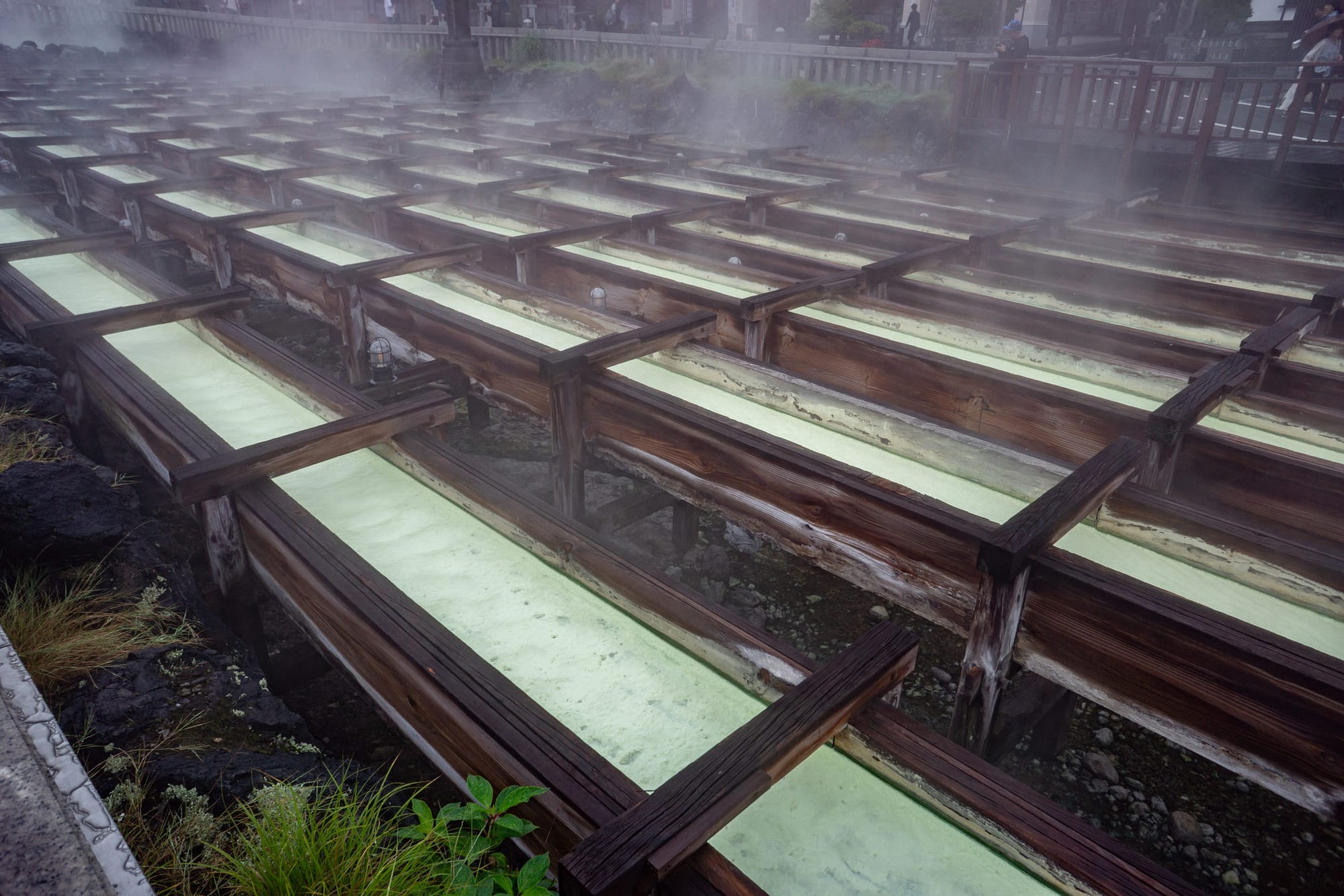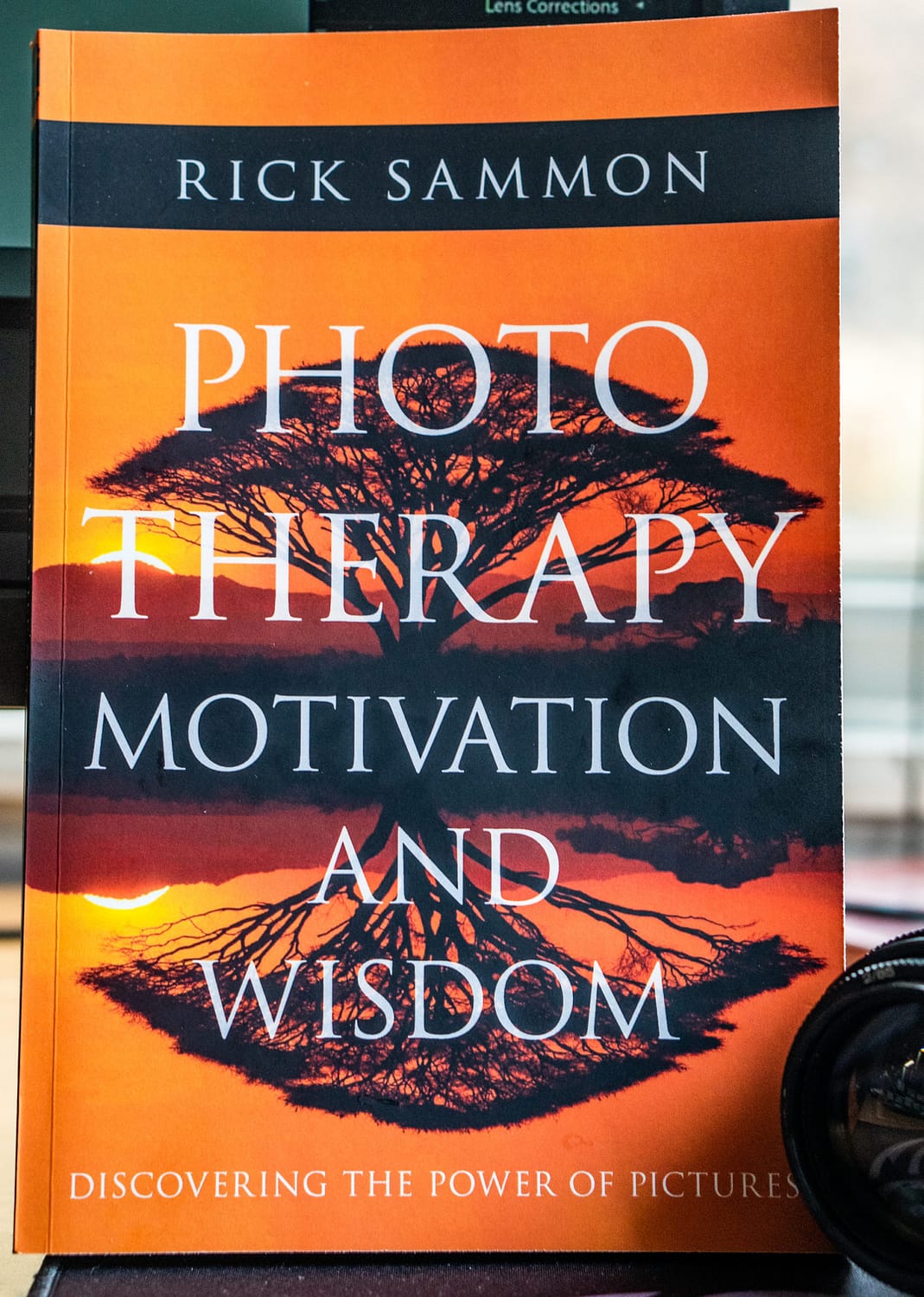I love Japanese hot springs – especially in the mountains in the winter. But any time of year is a good time for Kusatsu (草津町) one of the most famous hot springs (onsen) towns in Japan and because it is ever-so-slightly more difficult to get to, not many foreign travelers go there. I’d say it is worth the trip to the mountains of Gunma Prefecture.
After a week in Tokyo we took a couple of days to get away from the cities and head northwest into the mountains. There are at least three different railroad companies going to Kusatsu and a few bus lines but since we had a two-week JR Pass I chose to get there by JR (Japan Railways). It was easy. We took the JR limited express train from Ueno Station in northeast Tokyo for the 2.5 hours to Naganohara-Kusatsuguchi Station (長野原草津口駅). At Naganohara-Kusatsuguchi Station we followed everyone else outside to get on the JR bus for the 10-minute ride to Kusastu Onsen. Onsen means hot springs.
Once we alighted at the central bus station in Kusatsu we used GPS to find Kusatsu Kotodama, our guest house, about a 10-minute walk away. The guest house turned out to be a 15-20 minute walk uphill from the town center, but the host was very nice and the tatami room was pleasant. It cost $50 for two nights. If you prefer the upscale ryokan experience and can book ahead you can get a room in a traditional ryokan in the center of town.
We tossed our rolling bags carefully upon the tatami mats and headed out to explore the town and its hot springs in the cool mountain air. We followed Chuo Dori (Central Street) downhill past the ubiquitous Lawson’s “conbini” (convenience store) to the confluence of streets at the center of the town. There we found the famous teal-colored yubatake, or hot spring field. Several rows of wooden tubs guide the hot springs water down the slope to some steaming falls. The water comes out of the spring at 70 degrees Celsius so it has to be cooled in these tubs before bathers can enjoy the waters. At the bottom of the slope the water is siphoned off to the various onsen, or bathhouses, nearby. The smell of sulfur fills the air. Hotels, ryokan and shops ring the yubetake and the walkway that rings it. On the walkway you’ll find foot baths you can soak your feet in. If you’re like me, you’ll also be found by some very friendly Japanese Jehovah Witnesses.
After exploring the yubatake area head for any of the bathhouses in town and start soaking. One of the best is Goza no Yu right at the top of the yubatake. Next to it is the very small, but free, Shirahata no Yu Hot Spring bathhouse. This tiny bathhouse has superhot water and opens at 5 am so if you want some time and space to yourself this is a good opportunity for an early morning scalding.
I would recommend at least one night and two days in Kusatsu so you can enjoy the beautiful night views of the illuminated yubatake. The town center takes on a cozy ambiance perfect for a stroll and dinner in the evenings.
A word of caution as you wander around inside the bathhouses. As you walk from sunken pool to sunken pool be very careful about slipping on wet floors and stepping down into the pools. This is where I learned my lesson. I was stepping down into a pool framed by timbers and misjudged the depth of the water, slipped, fell backwards and slammed my back across the edge of a sharp timber. I’ll never forget the look on the face of the naked guy I landed on. Situations such as this are a good time to deploy a “sumimasen” (I’m sorry) – as soon as you are able to speak again. It took weeks for my back to heal.
We spent most of our time in Kusatsu making the rounds of onsen but there are some wonderful meandering lanes full of shops selling all sorts of unique, Japanese crafts and foods. We didn’t have much room in our bags but we did buy a dark blue noren, or Japanese door curtain, with “yu” or bathhouse, written on it. It hangs in our home today to remind us of our visit to Kusatsu.
Recommended:
Sainokawa Open-Air Bath in Sainokawara Park
Sainokawara Park is a short walk from downtown into a beautiful valley with a large open-air bath in the park. This is where you can sit in the large gender-separated pools outdoors and enjoy the sight of the forests and mountains towering overhead. Even though the baths are outdoors they are well-hidden from potential on-lookers. On a snowy or rainy day it is especially invigorating to relax in the hot water and let the cool rain or snow land on your face. http://sainokawara.com/en/
Ohtaki no Yu 大滝乃湯
About a 15-minute walk from the center of town, the awaseyu or partition baths in this traditional onsen are hard to find in Japan these days. You start out in small baths that are just hot and gradually work your way through several baths of increasingly hot water until you finally arrive at the hottest one that I suspect they use to boil eggs in after the doors close at night. The cost is about 900 yen per adult and 400 yen per child. http://ohtakinoyu.com/en/
Goza no Yu 御座之湯
Goza no Yu is a modern two-story wooden bathhouse next to the Yubatake. The main building was re-created in 2013, using Japanese turn-of-the-century architecture with Japanese cedar wood totonbuki roofs. The building has a sublime, spirit-lifting atmosphere. After soaking and relaxing in the water visitors can dry off, dress and relax by laying on the tatami mats in a large top-floor room with great views of the town. Mornings and evenings are less crowded. Cost is 600 yen per adult and 300 yen per child. http://gozanoyu.com/en/
Netsu no Yu Performance 熱乃湯
Near the top of the yubatake there is the Netsu no Yu building where visitors can watch a ritualized yumomi dance performance and demonstration of how the hot spring waters were traditionally cooled enough for bathers to survive. The line to buy tickets can be long on weekends but the early morning shows are less crowded. Tickets for adults are 600 yen. https://www.kusatsu-onsen.ne.jp/netsunoyu/
Recommended way to Kusatsu
Take the JR limited express from the Ueno Station in Tokyo to Naganohara-Kusatsuguchi station (2.5 hours for about 5,000) yen). At Naganohara-Kusatsuguchi Station follow the crowd to the JR bus that should be waiting outside the exit of this small station. Take the bus to Kusatsu Onsen (about 10 minutes). If you have a JR Railpass the whole journey is covered by the pass. There are only three round trips a day on this line so book in advance.
Alternative Route
Take a JR Highway Bus from Tokyo’s Shinjuku JR Highway Bus Terminal to Kusatsu. This is cheaper (about 3500 yen) but it takes 4 hours. Strangely, JR passes are not valid on these buses. Shinjuku Station can be very confusing so allow extra time to find the bus terminal.
Getting around Kusatsu
Kusatsu is hilly but if you don’t have mobility issues it is easy to walk to almost every attraction. Most attractions are very near the yubatake (hot water field) at the center of town. Hotels next to the yubatake are more expensive but very convenient. If you prefer to spend less there are much less expensive guesthouses a 10-minute walk from the center.
Recommended Budget Lodging
Kotodama Guest House
Address: 23-5 Kusatsu, 吾妻郡草津町 Agatsuma District, Gunma 377-1711, Japan
Phone: +81 70-4371-7974
https://www.booking.com/hotel/jp/kusatsu-kotodama.html
If you prefer more expensive, upscale lodging check here: https://www.japaneseguesthouses.com/ryokan-search-results/Kusatsu-Onsen/




